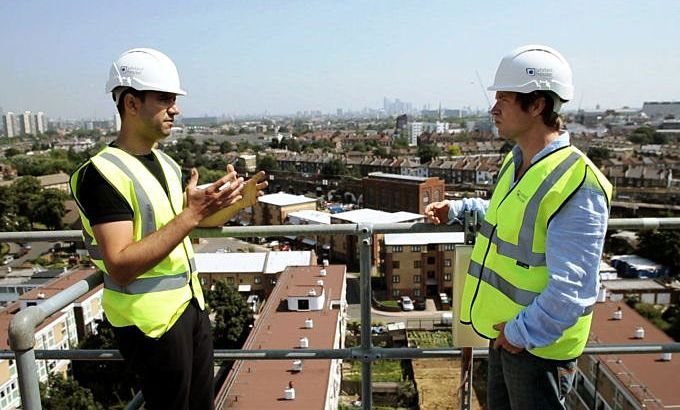
Can Growth be Green? The Economy Special
This special episode features people helping to re-define the relationship between economics and the environment.
Having your cake…
Continuous economic growth is the benchmark of success for modern nations across the world. However, as the global financial crisis rolls on and the true costs of environmental degradation become increasingly evident, a counter-movement is gaining traction based on the belief that it is time to consider some alternative economic models.
Keep reading
list of 4 itemsTurtles swimming to extinction in Malaysia as male hatchlings feel heat
Could shipping containers be the answer to Ghana’s housing crisis?
Thousands protest against over-tourism in Spain’s Canary Islands
In this special edition of earthrise, Russell Beard meets some of the people who are re-thinking the relationship between economics and the environment.
Andrew Simms of the New Economics Foundation argues that if we are to avoid catastrophic environmental damage, growth will inevitably have to reduce. He believes that in a no-growth economy, success would be defined in ways other than just profit. He cites Robert Kennedy’s comment that GDP “…measures everything … except that which makes life worthwhile”.
Carlota Perez, an academic and author, is a passionate advocate of ‘green growth’ achieved through development of the green technology sector. In fact, she regards this as the only route out of the current economic crisis. Use of government policy to encourage innovation and making a green lifestyle truly aspirational, she argues, are key to sustaining growth while protecting the environment.
Feeding the 5,000
Many argue that continued economic growth is necessary to provide food and other basic necessities for our rapidly growing population. But some say we already produce more than enough food – we just need to manage it more carefully.
Each year, developed nations waste a staggering amount. In fact, all the world’s one billion hungry people could be lifted out of malnourishment on less than a quarter of the food that is wasted in the US, UK and Europe alone.
British campaigner and writer Tristram Stuart is renowned for his sustained efforts to raise awareness on the issue. In recent years he and other food waste campaigners have staged an event of literally biblical proportions in London’s Trafalgar Square called ‘Feeding the 5,000’. Stuart’s team serves up an enormous free feast made entirely from ingredients which would usually be thrown away, such as oddly-shaped vegetables rejected by supermarkets.
Russell Beard helps rescue some reject cabbages from a field in the east of England, finds out how to make use of ‘waste’ food at The People’s Supermarket, and discovers there really is such a thing as a free lunch at Stuart’s big curry give-away.
Brixton in transition
In the inner-London neighbourhood of Brixton, residents are creating a sustainable local economy that offers an alternative to the accepted paradigm of continual growth and over-consumption. As part of the global Transition Town movement, members of Brixton transition town have created their own local currency – the largest in the UK – to stimulate sustainable, local production and help create a more resilient economy.
They have also begun to generate their own energy through the UK’s first inner-city renewable energy co-operative, which is installing solar panels on the roof of a council estate, and have created over 80 community-owned food gardens in the borough, including a chain of ‘edible bus stops’.
Russell Beard travels to south London to see how local economies could show the way to a more balanced economic model that values people and planet.
How it Works Animation – The Circular Economy
One major problem with today’s economy is that the resources flowing through it only go in one direction – from extraction to production and consumption, and to disposal. An alternative to this hugely wasteful linear system could be a ‘circular economy’ – the subject of this week’s ‘How it Works’ animation.